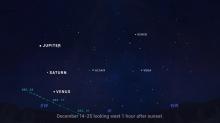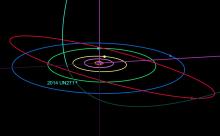Listen to today's episode of StarDate on the web the same day it airs in high-quality streaming audio without any extra ads or announcements. Choose a $8 one-month pass, or listen every day for a year for just $30.
You are here
Perseid Meteors
One of the year’s best meteor showers will be at its best the next couple of nights. Under dark skies, you should see up to a few dozen “shooting stars” per hour — especially tomorrow night, at the shower’s peak.
The Perseid meteor shower gets its name from the constellation Perseus. If you track the meteors across the sky, that’s where their paths converge. But the meteors can appear anywhere, so you don’t need to look toward the constellation to see them. The view is better when Perseus climbs higher into the sky, though, in the wee hours of the morning.
While the shower gets its name from Perseus, it gets its meteors from Comet Swift-Tuttle — a mountain-sized ball of ice and rock that orbits the Sun once every 133 years or so. As the comet gets close to the Sun, it warms up. Some of its ice vaporizes, and small bits of ice, rock, and dirt fly out into space.
These particles spread out along the comet’s orbit. Earth zips through the trail of comet dust every summer. Bits of debris ram into the atmosphere at more than a hundred thousand miles per hour. They vaporize, forming the glowing streaks of light known as meteors.
To watch the Perseids, find a dark but safe viewing site, well away from the glow of city lights. The best view comes in the hours before dawn on Sunday. The Moon will be a thin crescent, so it won’t spoil the show put on by the Perseids — one of the year’s best meteor showers.
Script by Damond Benningfield





